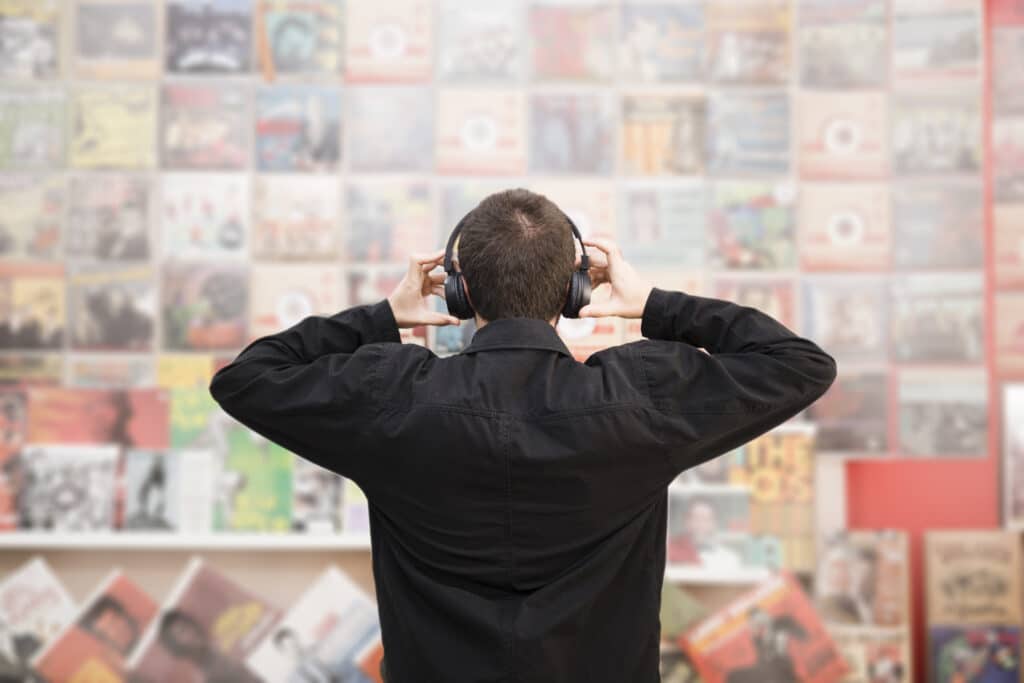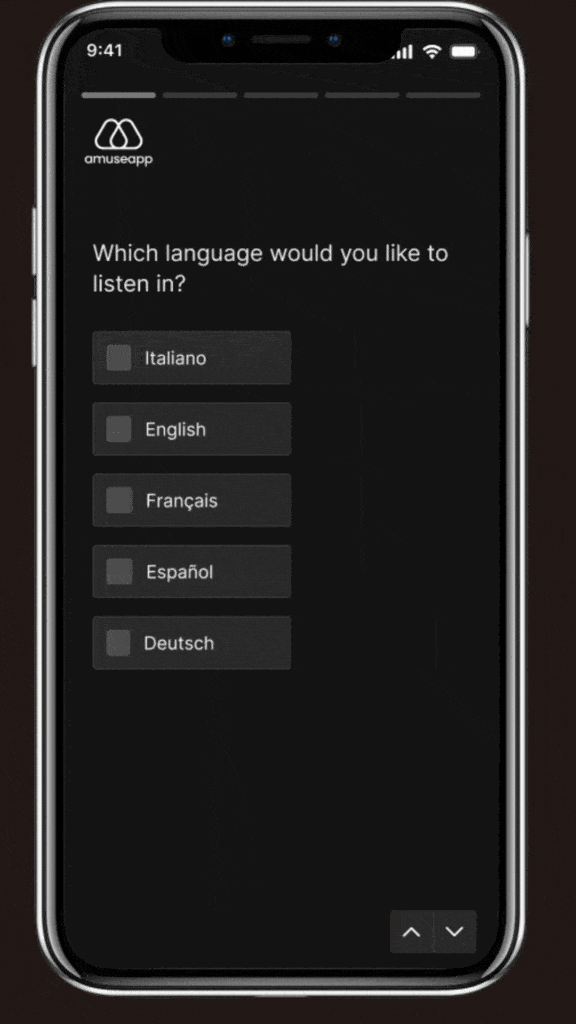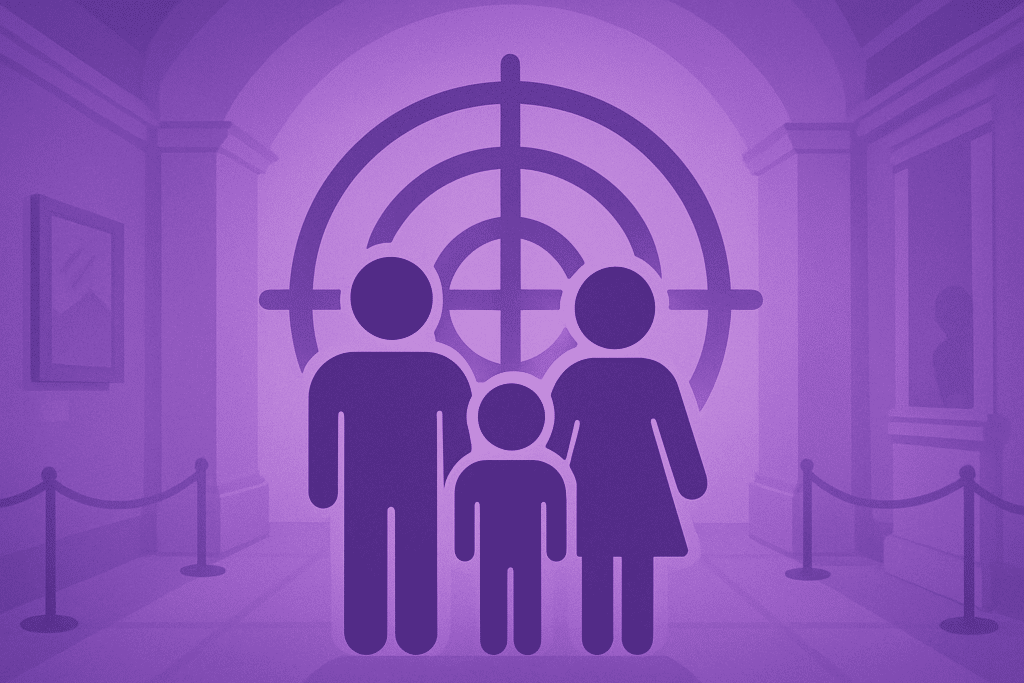In an era where accessibility and user experience are at the heart of museum strategies, offering personalized audio guides for multiple audiences is no longer an option, but a necessity. Customizing the narrative according to the audience means transforming each visit into a tailored journey, truly engaging families, children, experts, or people with sensory disabilities.
According to the ICOM (International Council of Museums), “accessibility and” inclusion are now among the fundamental priorities for the global cultural sector. And the way we narrate an exhibition deeply affects its cultural and social impact.
Let’s see how and why creating tailored audio guides represents a winning strategy for every museum institution.
Why Personalized Audio Guides for Multiple Audiences Make a Difference
Every visitor enters a museum with a unique set of expectations, skills, age, and needs. Offering personalized audio guides for multiple audiences allows you to truly speak to each of them.
A family with children, for example, seeks an engaging, narrative story filled with curiosities, characters, and mysteries. An art expert, on the other hand, looks for historical context, stylistic comparisons, and quotes. A visually impaired person needs precise, clear, accessible visual descriptions.
Tailored audio guides therefore enhance both the user experience and the effectiveness of museum communication.
Audio Guides for Families and Children: Storytelling, Play, and Discovery
When it comes to children and families, language matters as much as content. An effective children’s museum guide is narrated with a friendly, dynamic tone rich in auditory stimuli.
In this context, the audio guide becomes a tool for play and discovery. You can imagine a sound treasure hunt, the voice of a historical character speaking directly to the young listener, or a soundtrack accompanying the artworks.
The Children in Museums Award (EMYA, 2022) awarded institutions that created personalized sound paths for the little ones, demonstrating that audio, if well designed, is a powerful tool for experiential learning. An example is the NEMO Science Museum in Amsterdam, which developed voice guides with challenges and quizzes for every age.
Audio Guides for Experts: Depth, Sources, and Comparisons
Another key audience is experts: scholars, art historians, curators, restorers. Here the challenge is different: providing in-depth content without falling into pedantic captions.
The ideal audio guide for this audience includes references to studies, comparisons with other works, and stylistic analyses. Quotes from critical catalogs or academic articles make the narrative more solid and authoritative.
A virtuous example comes from the National Gallery in London, which offers an advanced level in its digital guides, with insights curated by the conservators themselves and available in parallel with the visit.

Accessible Audio Guides: Including People with Sensory Disabilities
A museum that truly defines itself as accessible must also consider the needs of people with sensory disabilities. The personalized audio guides for multiple audiences must therefore include versions in sign language, detailed audio descriptions (audio descriptions), and simplified voice commands.
In the study “Great Art and Culture for Everyone” (2013, revised) the need for inclusion and accessibility for all in the cultural sector, including people with disabilities, is emphasized.
The Tiflological Museum in Madrid, fully accessible to blind or visually impaired people, integrates audio guides with tactile maps and very detailed voice descriptions. This approach is a model to follow for many European museums.
How to Offer Personalized Audio Guides for Multiple Audiences?
The use of flexible and intuitive digital platforms, such as amuseapp, allows for the design of multilingual, interactive audio experiences perfectly adaptable to different audiences thanks to the use of artificial intelligence.
amuseapp, in particular, offers a unique feature: amuseapp Wizard.
Here’s how it works: the Wizard is an intelligent system that, through a very short quiz with simple and intuitive questions, guides the visitor to discover the audio guide itinerary best suited to their interests and visiting style.

This is a feature that greatly enhances the visitor experience in cultural places and is a solution accessible to museums of all sizes and integrable without initial investments.
Personalized Audio Guides for Multiple Audiences: a Tool for Inclusion and Museum Innovation
Including personalized audio guides for multiple audiences in the museum strategy is not just a good practice, but a transformative action. It means building an authentic relationship with each visitor, enhancing the “museum’s identity and expanding” access to culture.
This vision is consistent with the recommendations of UNESCO on promoting cultural diversity and inclusion in cultural places. More accessible, more empathetic, more human museums are also more visited, appreciated, and sustainable.
Amuseapp: the Digital Solution for Tailored Audio Guides
amuseapp is much more than a simple audio guide: it is an innovative digital platform that transforms the visitor experience and helps museums increase revenue.
Personalized itineraries with Artificial Intelligence. Unlike traditional audio guides, amuseapp uses artificial intelligence to create tailored paths based on the needs of each visitor: children, people with sensory disabilities, experts, students, and many other categories.
Accessibility in 47 languages. Today only 20% of museums offer content in more than two languages. With amuseapp, cultural places can break down this barrier, automatically generating texts and audio in 30 languages and making cultural heritage accessible to everyone, everywhere.
Real-time virtual tour guide chatbot. Thanks to a customized chatbot, amuseapp offers visitors a virtual guide always available, able to answer their questions and enrich the visiting experience.
Simple and secure donation collection. With amuseapp, cultural places can collect donations directly through the app, quickly, securely, and intuitively.
Feedback for continuous improvement. amuseapp allows collecting visitors’ opinions on the visiting experience, providing valuable data to optimize their services.
Available in app or web app mode. The amuseapp web app allows visitors to access the museum’s digital content without having to download any application. The “amuseapp mobile app is designed to offer a” more advanced and customizable experience. By downloading it from official stores, visitors can benefit from extra features.
A “single solution, multiple benefits. With amuseapp, cultural places can offer an” innovative, inclusive, and interactive experience, while at the same time improving their sustainability model.
Learn more about amuseapp.
Do you have a museum and want to find out how to offer the best digital experience to your visitors?
👉 Contact us!

